

Tired of manually reconciling your Payoneer transactions? Cointab can help! We understand that managing international payments can be complex and time-consuming. Our cutting-edge software automates the reconciliation process between Payoneer and your various financial reports, saving you valuable time and ensuring accurate financial data.
Focus on Growth, Not Reconciliation
Cointab eliminates the stress of manual reconciliation, allowing you to focus on growing your business. With precise financial data at your fingertips, you can make informed decisions and achieve greater success.
Understanding Payoneer Reconciliation
Reconciliation involves matching transactions across different reports, including:
Payoneer Settlement Reports:
These reports detail completed and paid orders.
Payoneer Refund Reports:
These reports track cancelled and refunded orders.
Website Reports:
These reports show website-based order activity.
ERP Reports:
These reports contain your internal order information.
Bank Statements:
These reports reflect transactions processed through your bank and the payment gateway.
Payoneer With Website Reconciliation
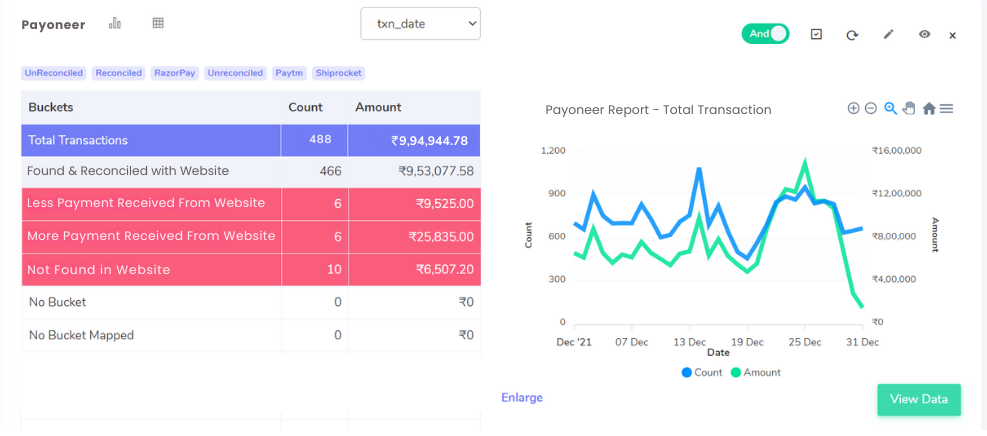
Cointab automates the reconciliation process, identifying discrepancies between reports:
Matched:
Transactions found in both the Payoneer settlement report and your website report.
Discrepancies:
Website Overages:
When your website report shows a higher amount than the Payoneer settlement report.
Website Shortages:
When your website report shows a lower amount than the Payoneer settlement report.
Missing Website Transactions:
When transactions appear only in the Payoneer settlement report.
Website with Payoneer reconciliation:
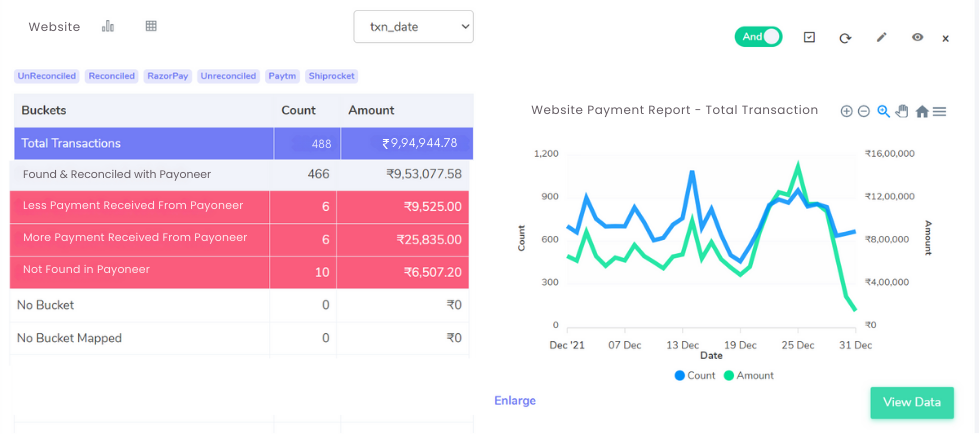
Matching Transactions:
Found in Both Reports: These transactions appear in both the Payoneer settlement report and your website report, indicating a successful match.
Discrepancies in Amount:
Website Overages:
The website report shows a higher amount compared to the Payoneer settlement report. This might require further investigation.
Payoneer Overages:
The Payoneer settlement report reflects a higher amount than the website report. This could be due to fees, refunds processed by Payoneer, or potential website data errors.
Missing Transactions:
Cancelled Orders:
These transactions appear on your website but are missing from the Payoneer report because they were cancelled by the customer.
Streamline your Financial Reconciliation Now!


Request a Demo!

Payoneer reconciliation with ERP:
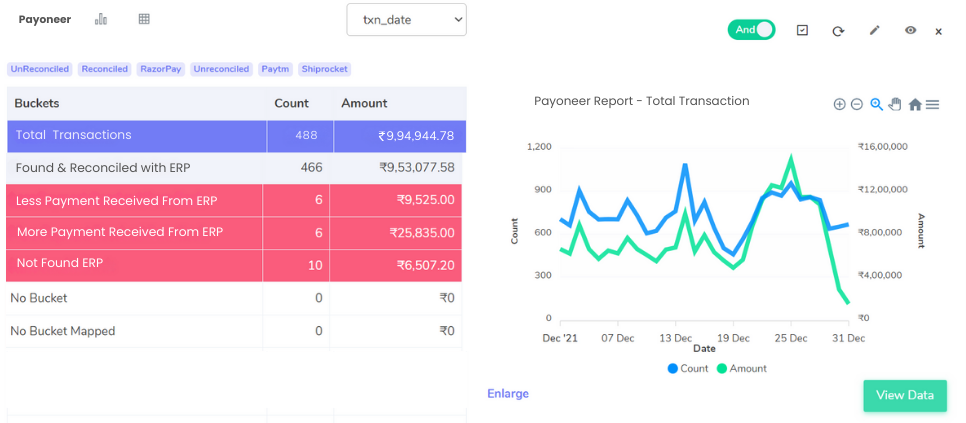
Matching Transactions with ERP:
Found in Both Reports:
These transactions appear in both the Payoneer settlement report and your ERP system, indicating a successful match.
Discrepancies in Amount:
ERP Overages:
The ERP report shows a higher amount compared to the Payoneer settlement report. This might require investigation into potential reasons like discounts offered on the website but not reflected in the ERP, or rounding differences.
ERP Shortages:
The ERP report reflects a lower amount than the Payoneer settlement report. This could be due to missing sales entries in the ERP or additional fees charged by Payoneer.
Missing Transactions:
Unrecorded Sales:
These transactions appear in the Payoneer settlement report but are missing from the ERP report. This might indicate missing sales entries that need to be added to the ERP system.
ERP report with Payoneer reconciliation:
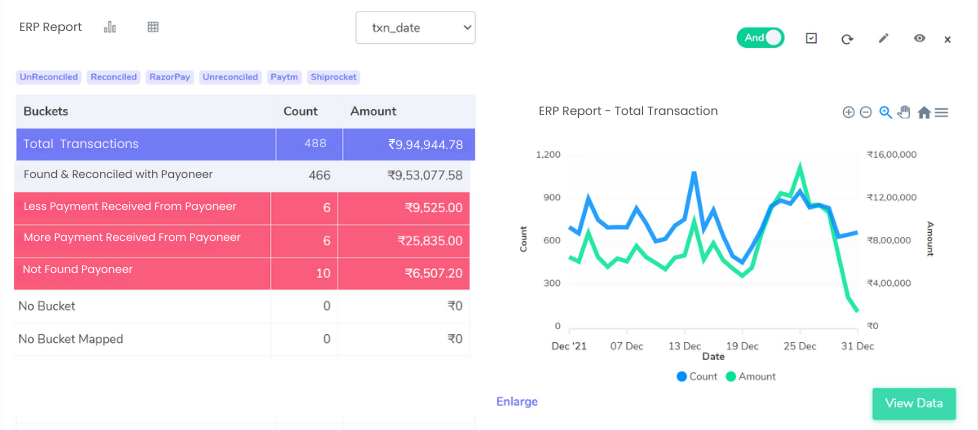
Matching Transactions with ERP:
Found in Both Reports:
These orders appear in both the Payoneer settlement report and your ERP system, indicating a successful match.
Discrepancies in Amount:
ERP Overages:
The ERP report shows a higher amount compared to the Payoneer settlement report. This might require investigation into potential reasons like:
Discounts offered on the website but not reflected in the ERP.
Rounding differences.
Additional charges applied in the ERP (e.g., taxes, shipping) not reflected in Payoneer.
Payoneer Overages:
The Payoneer settlement report reflects a higher amount than the ERP report. This could be due to:
Fees charged by Payoneer.
Potential errors in the ERP (e.g., missing sales entries).
Missing Transactions:
Unrecorded Sales in Payoneer:
These transactions appear in the ERP report but are missing from the Payoneer settlement report. This might indicate missing sales entries that need to be added to Payoneer.
Cancelled Orders:
These transactions appear in the ERP report but not in the Payoneer reports because they were cancelled by the customer.
Payoneer with Bank reconciliation:
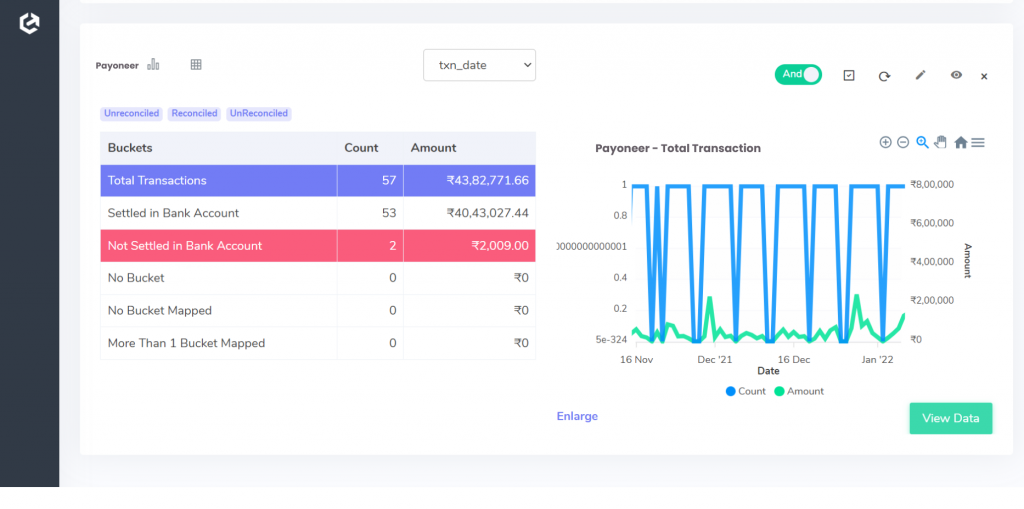
Matched Transactions with Bank:
Found in Both:
These transactions appear in both your bank account and the Payoneer settlement report, indicating the funds were successfully deposited.
Discrepancies with Bank:
Not Found in Bank Account:
Transactions listed in the Payoneer settlement report are missing from your bank account. This might require investigation into reasons like:
Pending transactions:
The funds might still be in transit between Payoneer and your bank.
Bank fees:
Payoneer may have withheld fees that aren’t reflected in the settlement report but will appear in your bank statement.
Mismatched dates:
The transaction dates in Payoneer might differ slightly from your bank’s reflected date.
Bank reconciliation with Payoneer:
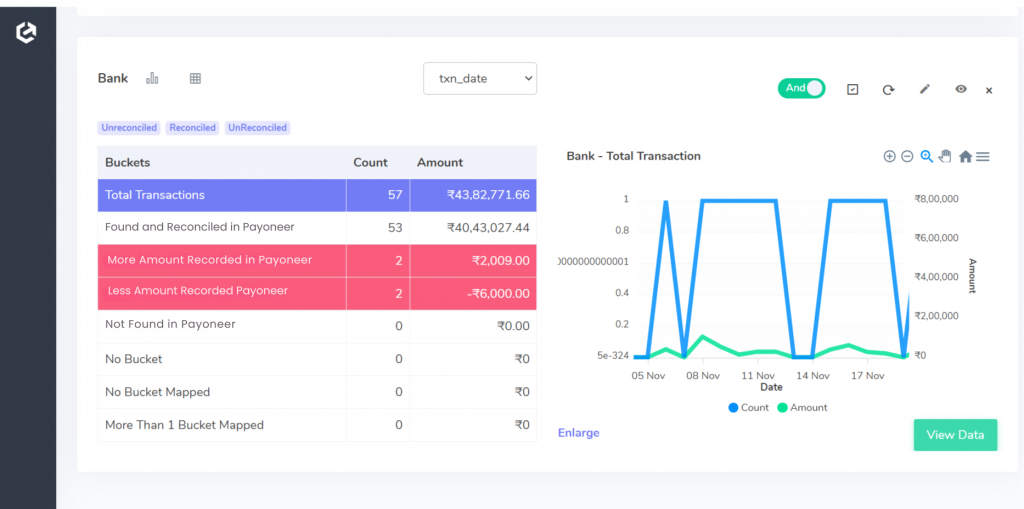
Matching Transactions with Bank:
Found in Both:
These transactions appear in both your bank account and the Payoneer settlement report, indicating a successful match.
Discrepancies in Amount:
Payoneer Overages:
The Payoneer settlement report shows a higher amount compared to the bank statement. This could be due to:
Fees charged by Payoneer that aren’t reflected in the bank statement.
Potential errors in the bank statement (e.g., missing deposit).
Bank Overages:
The bank statement reflects a higher amount than the Payoneer settlement report. This might require investigation into reasons like:
Bank fees deducted from the deposit that aren’t shown in Payoneer.
Delayed reporting:
The transaction might be reflected earlier in the bank statement than in the Payoneer report.
Missing Transactions:
Unrecorded Deposits in Payoneer:
These transactions appear in the bank report but are missing from the Payoneer settlement report. This might indicate deposits not yet reflected in Payoneer (e.g., pending transfer).
Unidentified Bank Transactions:
Transactions appear in the bank statement but cannot be matched to any Payoneer settlement report entry. This could be due to:
Incoming transfers from other sources.
Bank fees or refunds not associated with Payoneer.
Ditch the spreadsheets and say goodbye to reconciliation woes! Cointab is your financial co-pilot, guiding you through the once-dreaded task of matching transactions. No more wading through mountains of data – Cointab streamlines the process, giving you a clear picture of your finances.
Imagine website reports, ERP systems, and bank statements singing in harmony. Cointab acts as the conductor, ensuring all your financial data is in perfect tune. This newfound clarity empowers you to make data-driven decisions that propel your business forward.
So, are you ready to revolutionize your reconciliation process? Buckle up with Cointab and transform your financial management into a smooth, stress-free ride!




